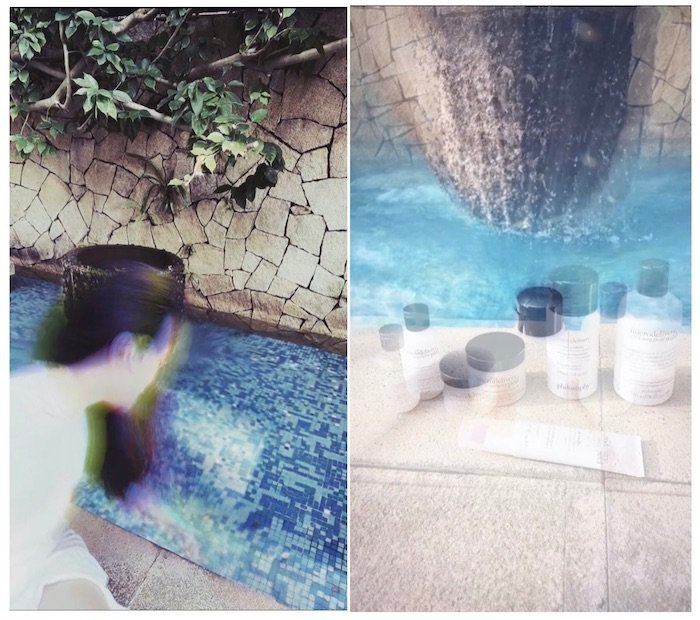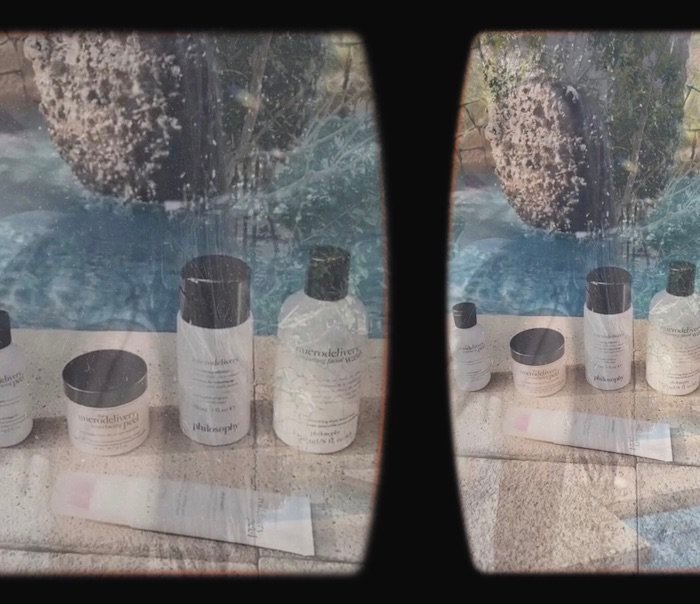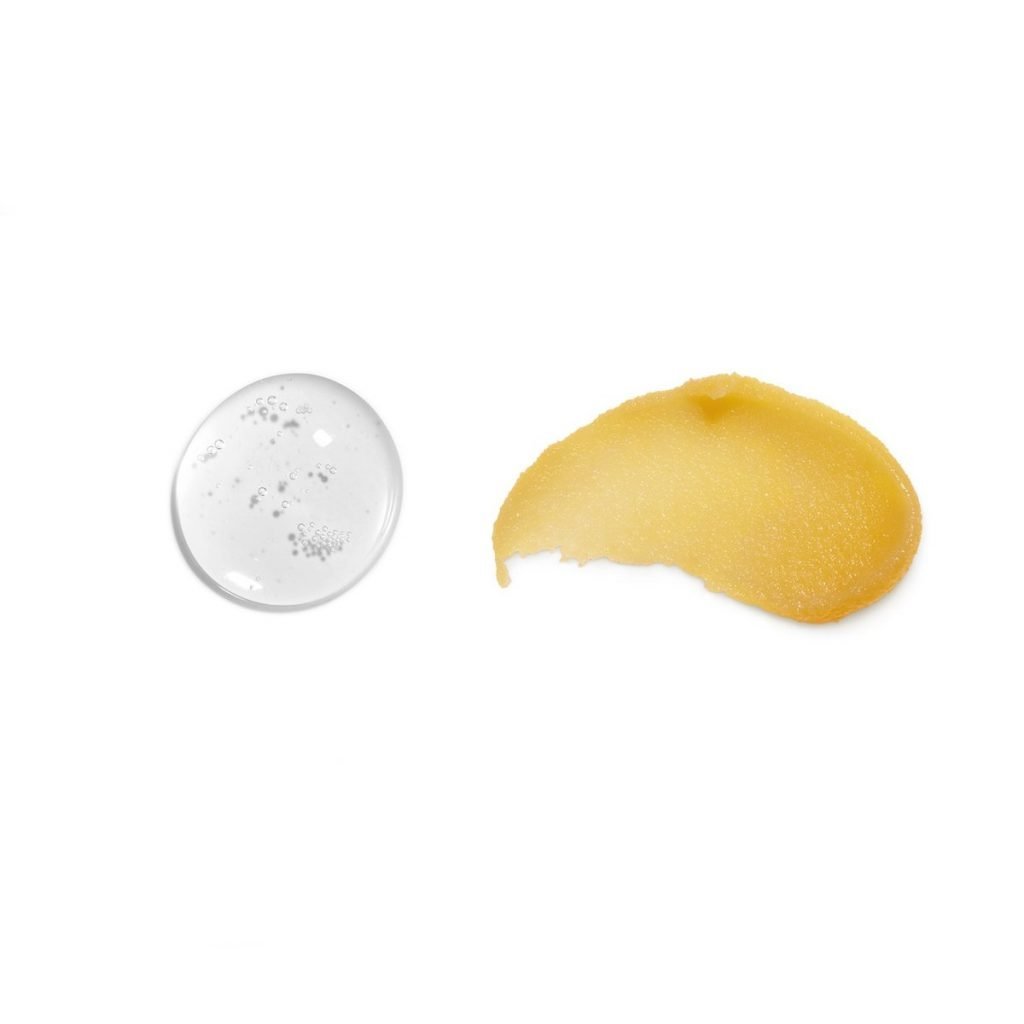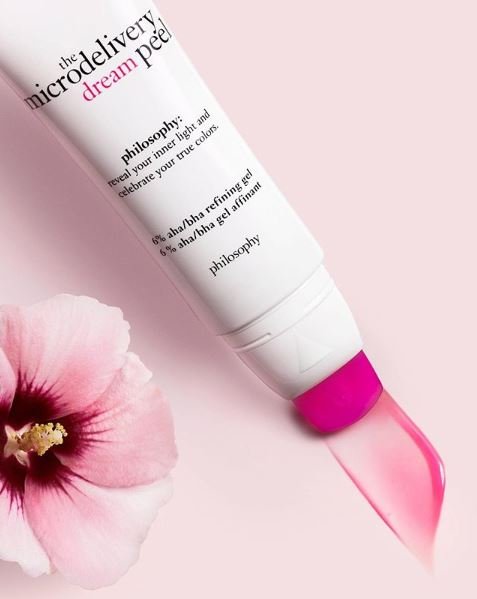Podcast: Play in new window | Download
Subscribe: Apple Podcasts | Spotify | RSS
Ep 58: How to Incorporate Home Chemical Peels Into Your Skincare Regimen
This week’s podcast is on how to choose the right chemical peel for your home skincare regimen. Chemical peels contain AHAs and/or BHAs, which can help to accelerate the skin cell renewal process. This is very important for photoaging and can also be part of the treatment of mild to moderate comedonal acne. The differences between various types of chemical peel ingredients are explored, in addition to the measures that one can take to ensure your skin stays irritation-free.
Philosophy’s range of microdelivery products contain sophisticated actives like CICA and hyaluronic acid that synergise with AHAs and BHAs culminating in the ideal home chemical peel for all skin types.
Incorporating chemical peels into your skincare routine
Dr. TWL: Hi guys I’m Dr. Teo Wan Lin and welcome to today’s episode of Dermatologist Talks: Science of Beauty. We’re going to talk about peels today. Specifically, we want to cover the safe and effective incorporation of chemical peel active ingredients such as AHAs and BHAs into your home skincare regimen.
Chelsea: This podcast episode is brought to you by Philosophy. Their Microdelivery Product Range remains the top-selling at-home facial peel since its inception in 1996. They are known as the peel pioneers for effective yet gentle solutions that you can use from the comfort of your own home to deliver smoother and brighter skin.

Alpha hydroxy acids for skin
Dr.TWL: We want to start, first of all, with the significance of AHAs, BHAs and their concentrations. AHAs are an acronym for alpha hydroxy acid. This is a type of acid we can derive from fruit acids. We commonly use these in various concentrations for chemical peels performed in dermatologist offices. The concentrations used in a clinical setting are much higher. For example, it can range from 10 to 25%, or maybe even higher for superficial peels.
Are chemical peel acids safe for darker skin tones?
For this part of the world, we are dealing with skin of color. This means that we have to be aware that chemical peels performed in Caucasian populations are not so suitable in our context. This is because firstly, our natural melanin content is such that we are much more prone to develop post inflammation hyperpigmentation. This is a potential complication when higher concentrations of acids are used for chemical peels. Secondly, in equatorial places in Singapore, we get 100% of the sun’s harmful ultraviolet rays. It’s important to bear in mind that alpha hydroxy acids actually increase our sun sensitivity potential.
Chelsea: So, it’s very relevant in a COVID-19 era that we start to think about incorporating chemical peel acids in our homecare regime! On this, is there anything to take note of when using acids at home?
@drteowanlin Philosophy’s micro delivery solutions #editinghacks #sgtrending #sgtiktok #fyp #foryourpage ♬ Complicated – [ATLASTIC] VLOG ♥️♥️
Is it safe to use a chemical peel at home?
Dr. TWL: The key difference here is that for chemical peels to be done in a home setting, there has to be a sufficient reduction in the concentration of the acids. If not, medical supervision is required.
This is where the philosophy range of resurfacing peels are very relevant. They are formulated with an appropriate concentration of AHAs at 4%, which is highly tolerable. Additionally, they are also infused with additional anti-inflammatory antioxidant ingredients such as Centella Asiatica, known as Cica. Also, vitamin C, which on its own is a brightening antioxidant active ingredient. Particularly, we want to talk about the different types of active ingredients that are incorporated in this series of home chemical peels in Philosophy’s Microdelivery product range.
Are AHAs only for acne-prone skin? How do AHAs work?
Chelsea: Actually, I’ve read up on AHAs before. Is it only for those with acne-prone skin?
Dr. TWL: Indeed, AHAs are very important for individuals who suffer from acne and oily skin. Primarily, because AHAs help to exfoliate the skin on a microscopic level. What actually happens is that it helps to gently slough away the accumulation of dead skin cells at the surface of your skin. This dead skin can increase your chances of developing comedones like blackheads and whiteheads. If you are using an AHA product, not only can it control oil production, it also helps to combat the retention of dead skin cells that can aggravate inflammation related to acne.
AHAs are also beneficial for individuals keen to prevent photoaging. Photoaging is a result of age-related, ultraviolet-induced skin damage. What AHAs do is that they help to stimulate collagen production. It can also help to minimize textural irregularities, smoothen pigmentation and reduce fine lines and wrinkles when used regularly.

Chelsea: I see! I feel that many people would find this helpful. I mean I know that I do have acne-prone skin that I feel these peels could really help with. Apart from skin type, we also know that climate does affect our skin. When I’m in Singapore, my skin tends to be oilier just because of how hot and humid it is. What should we be keeping in mind when it comes to choosing the right peels and acids for us?
Which chemical peel is best for my skin?
Dr.TWL: Overall, living in a year-round tropical climate like Singapore, we have to keep in mind our ethnic group demographic where we are predominantly dealing with skin of color. Chemical peels for home use have to be gentle enough, not increase the risk of sun sensitivity, as well as post-inflammation hyperpigmention. At the same time, it should deliver positive benefits of increasing skin radiance. When formulated appropriately, a home chemical peel can have a moisturizing function. For example, the hyaluronic acid content is able to penetrate better after the topmost layer has been exfoliated with an AHA acid.
In terms of special issues we should consider with regards to our climate. It’s important to note that many adults also struggle with adult acne. Additionally, living in a humid climate worsens the overall rates of secondary bacterial infections and complications from acne. Given the current COVID 19 pandemic, there is a concurrent pandemic of maskne arising from long-term wear of an occlusive face mask.
Overall, we also have the desire for brighter and more even facial skin tone in the over 25 age group that are experiencing photoaging. This gives rise to the demand for products with exfoliating properties, making this a very relevant area of cosmeceuticals that we should further explore.
Chelsea: Actually, I have a question that may seem quite basic, but I don’t actually know how it works. I’ve never really understood the term exfoliation precisely. Am I right to say it refers to removing the outer layer of your skin?

What does it mean to exfoliate the skin?
Dr.TWL: Well you’re sort of on the right track. Exfoliation is actually a rather broad layperson term that we use to define the removal of dead skin cells on the surface of the skin. Chemical exfoliation is related to the use of chemical peel acids. We know about glycolic, lactic acids- these belong to the family of alpha-hydroxy acids. Then you have beta hydroxy acids, for example, salicylic acid.
Chemical exfoliation
These two groups actually differ in terms of their chemical structure, but also in terms of their depth of action. Beta hydroxy acids, salicylic acid, for example, is oil soluble. Whereas, glycolic acids in the family of AHAs are water-soluble. For beta hydroxy acids like salicylic acid, it is expected to penetrate deeper into the skin because of their oil-soluble nature. In theory, it is able to not just control the rate of skin renewal, but also assist with an anti-inflammatory effect. This is particularly relevant in the treatment of adult cystic acne.
Physical exfoliation
Apart from chemical exfoliation, you may also have heard of the term physical exfoliation. It is not very precisely defined in dermatology because we generally do not recommend the use of abrasive scrubs. Instead, the traditional recommendation is chemical exfoliation. This is because it’s far more gentle and it addresses the renewal of the skin cells from a microscopic level.
However, there are lots of cosmetic cleansers that are marketed as scrubs. These contain beads that physically abrade the surface of the skin. While that can give a sensation of the skin feeling cleaner, what commonly occurs is that they can irritate the skin. If you have sensitive skin you should avoid this. But even if your skin is normal, regular exposure to such scrubs can induce sensitivity. I would not recommend this for exfoliation.
In an office setting, we perform microdermabrasion. I think this is the closest form of a physical exfoliation process that is evidence-based and also safe and effective for the skin. The critical part is the use of materials. For example, the diamond tip in microdermabrasion or other alternative metals or minerals. These help to resurface the skin in conjunction with vacuum technology. All that plays a role in terms of physically exfoliating the skin. Essentially, both chemical and physical exfoliation methods can increase the absorption of skincare ingredients.
How does Philosophy’s home peel formulations hold up to FDA guidelines?

Chelsea: Oh now that you mention it, maybe it is time to put aside my cleanser then. It does have these little beads that I’ve always thought help to exfoliate, but sometimes can be a little irritating on my skin. Well, I know that the FDA actually has a set of criteria for home chemical peels – looking at it now it says the acid content should be =<10%, pH > 3.5 and it should be formulated to reduce skin sensitivity.
Dr.TWL: Overall, the positive benefits of the Philosophy microdelivery product range is seen in the clinical tests that they have performed. The results show that there was an increase in the hydration level of the skin by 38%. This was in tandem with the improvement in skin smoothness, user perception of evenness of skin tone, as well as user perception of skin radiance- which is what we usually associate with in-office chemical peel treatments.
At a concentration of 4% AHA in the Philosophy range of Microdelivery products, it is impressive that there is a sustained positive impact that was revealed in these clinical studies. It is important to highlight that it is not just the percentage of AHAs that one is concerned with, but also the overall formula which distinguishes it from its competitors. This is essentially a highly tolerable formula, even for individuals with sensitive skin.
Active dermocosmetic ingredients

The other category of active ingredients that are noteworthy are peptides infused in the Philosophy range of resurfacing solutions. These have a direct impact on the stimulation of collagen production in the dermis, which is responsible for ensuring a plump and vigorous appearance of your skin. Cica, Centella Asiatica, is well evidenced in terms of its ability to reduce pigmentation.
This is very relevant when we’re talking about the incorporation of these active ingredients into AHA-based chemical peels. To illustrate, in certain individuals, AHAs have the potential to cause post inflammation hyperpigmentation when it is performing its function of resurfacing the skin. The other key ingredient would be hyaluronic acid, which is a molecule that can hold large amounts of water. It is essentially a humectant that traps water underneath the surface of your skin. This is key when we are talking about the Microdelivery resurfacing products. Essentially, we want to ensure that while the AHAs are increasing the rate of skin cell renewal, there is minimal risk of skin irritation.
Suitable for sensitive skin
For the incorporation of other active ingredients such as Cica, peptides, hyaluronic acid, and vitamin C, it’s useful to understand how it increases the tolerability of the products. This is something the FDA emphasizes in terms of its recommendations for over-the-counter chemical peels for at-home use.
Philosophy’s Microdelivery product range

Photo: philosophy
Chelsea: Wow that’s really exciting to hear! In fact, I’m so impressed with the entire lineup of Philosophy’s Microdelivery product range. The Exfoliating Wash is specifically formulated with orange peel extract and sunflower seed oil and is so refreshing to use… The Microdelivery Resurfacing Solution is a liquid exfoliator that can moisturize and brighten your skin at the same time.
The Microdelivery Resurfacing Peel is uniquely formulated with peptide-based resurfacing crystals, and also boosted with plant seed oils such as sunflower seed oil that can improve the tolerability of the product by delivering moisture to the skin.
Finally, the Dream Peel is an overnight peel that contains the highest concentration of AHAs and BHAs that is designed to be left on overnight in a clear drying formula. This is cosmetically very acceptable, as it doesn’t stain your pillowcase. It also has a flower extract from hibiscus that synergizes with the probiotic complex, overall helping to stabilize the skin microbiome and restore the skin texture, while at the same time, resurfacing the skin.

Photo: philosophy
Summing up
Dr. TWL: That’s right, the products from the Microdelivery range are actually very well formulated. It delivers the maximum benefits of chemical peels without the increased risk of skin irritation that we often associate with home chemical peels. On top of that, there are additional antioxidant ingredients that can be further beneficial to the skin when used in conjunction with the chemical peel formulas. We’ve discussed a lot about AHAs and BHAs today, and also the benefits of using a home chemical peel product that is well formulated to reduce the chance of any skin irritation. Correct use of these chemical peel products is also very important.
Well that’s it for today’s episode of Dermatologist Talks: Science of Beauty. I hope you’ve enjoyed the discussion about home chemical peels which I’m certainly incorporating into my skincare regimen.
Find us on:
You can follow us on Instagram @drteowanlin where we share our latest podcast updates and also check out our podcast website scienceofbeauty.net where we also share where you can get your hands on these lovely products!
The philosophy microdelivery product range is available on www.sephora.sg and in Sephora stores. This podcast episode is brought to you by philosophy as a joint collaboration to create scientific educational content relevant to skincare and dermatology. Images produced as part of editorial collaboration consistent with site policy.
